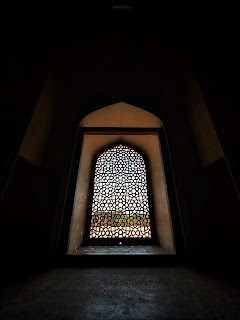Humayun's Tomb: A symbol of love that inspired Shah Jahan to build the Taj Mahal
We always prefer the Taj Mahal as a symbol of Love as it was built by a man for his love. Whether it's Chittorgarh fort, Roopmati Pavilion, or Bibi ka Maqbara, one thing we can find similar in these monuments is that they were built by men for women. There are plenty of structures built by men for their loved ones but we merely hear about any structure built by a woman for a man.
Well, there are many monuments built by women for their men like Lokeshwar Temple, Rani ki Vav, Humayun's tomb, and many more. We mostly don't consider them as a symbol of love as we still see things from a patriarchal perspective. It's not our fault it's just, that's how we grew up which resulted in our ignorance towards many stories from the female perspective.
The story of Humayun's tomb is one of them that didn't get as much attention as it deserves. This story is about a wife's love for her late husband.
Bega Begum was known as Zan-i-Kalan being the first wife of Humayun and was also known as Haji Begum after she performed the Hajj pilgrimage.
After the death of her husband Humayun in 1556 due to his fall from the staircase of his library at Purana Qila in Delhi. Bega Begum was so grieved over her husband's death that she refused to shift to Agra with his stepson, Akbar, and decided to dedicate her life to a sole purpose, the construction of the most magnificent mausoleum in the Mughal Empire with the Charbagh (Garden of Paradise) as mentioned in Quran. She also brought 300 Arabs from Mecca to pray for the Humayun's soul. One can still find some ruins and a huge gate called Arab ki Sarai.
The construction of the tomb started in 1565 and was completed by 1572 AD with monetary support from her stepson, Akbar. for which Begum hired Mirak Mirza Ghiyas for giving shape to the exquisite designs she had in mind. However, after the death of Mirza Ghiyas, the final structure was completed by his son, Sayyed Muhammad ibn Mirak. The sheer scale of Humayun’s tomb is considered a departure from his father, the first Mughal Emperor Babur’s modest mausoleum in Kabul. Although, it was with Babur that the trend of the garden mausoleum or the Persian Charbagh took root, and got enhanced with every passing generation.
The tomb at 47 meters is built in Persian style and is also the first Indian structure to incorporate the Persian double dome that is 42.5 meters high where the outer structure supports the marble exterior and the inner one leads into the cavernous interiors. The attractive huge jaalis and stone latticework can be seen in the tomb for the sunlight. And beneath this white dome lies an octagonal burial chamber with a single cenotaph, that of Mughal Emperor Humayun. Besides, this, the mausoleum complex became the graveyard for the emperor's successors, princes, and princesses including Dara Shikoh and Bega Begum who is buried near her husband.
Later, it became the inspection for many Mughal architectural marvels including the Taj Mahal.












Comments
Post a Comment